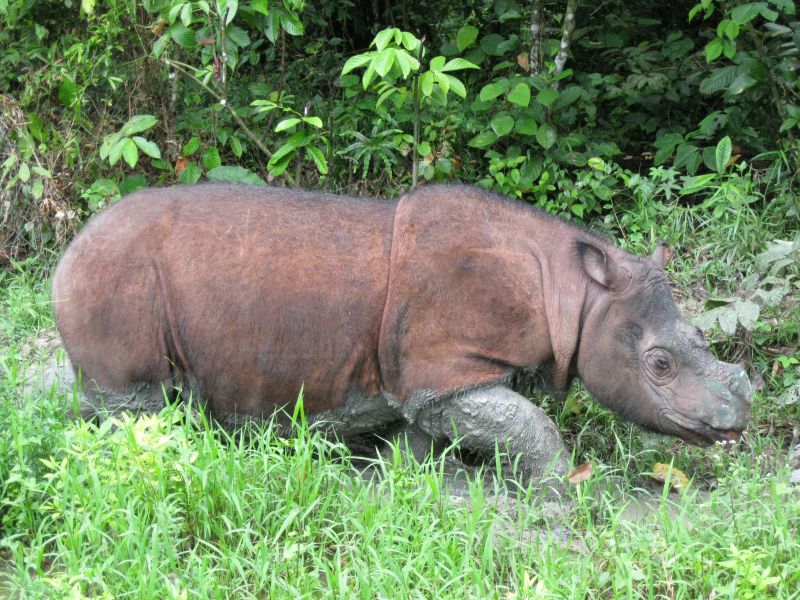KOTA KINABALU, Dec 21 — With the Sumatran Rhinoceros on the brink of complete extinction, wildlife experts in Sabah are pushing authorities to ensure no other endangered local species comes this close to oblivion.
While most felt it was too late to be able to save the critically-endangered rhinoceros, they said the there was still time for the state to urgently increase efforts to protect its other wildlife.
Borneo Sun Bear Conservation Centre founder Wong Siew Te said Sabahans must quickly learn that they cannot allow the same mistakes to threaten other endangered animals such as the tembadau or banteng, seladang, sun bear and others.
“We have to do everything to protect them and save them. We have to do everything to protect these endangered species when we know they are endangered and not wait until there is only few left,” he said.
The new urgency stems from news that one of the country’s two remaining Sumatran Rhinoceros is now critically ill, bleeding internally and refusing to eat. Iman, is the last known female, while Tam is the last male.
They were part of a trio that had been the state’s last hope of repopulating the species through captive breeding. However, since their capture, efforts to reproduce have failed as they were already riddled with reproductive issues.
“Even before Iman was sick, the future of the Sumatran rhino in Sabah and in the world was very bleak. It is a species on the verge of extinction and there is just not enough individuals in the wild and even in captivity,” said Danau Girang Field Centre director Benoit Goossens.
“We lost our chance to save the species 30 years ago and even then, I’m not sure we would have saved it,” said Goossens, adding that the combination of deforestation, decades of poaching, and rhino genetics all contributed to the species’ decline in the state.
Other efforts for captive breeding since the 1980s have also ended disastrously with some 40 rhinos dying in captivity due to various reasons.
With the middle-aged Tam, captured since 2008, being the only rhino capable of reproduction at the moment, Goossens said that authorities must step up all possible measures to preserve the species.
“What I think is that we should try everything in our capacity to try new technologies and especially assisted reproduction. And Indonesia and Malaysia should work together on this and share knowledge, expertise, genetic materials etc. are they prepared to do so? I’m not entirely sure,” he said.
Authorities here previously expressed a wish to work with their Indonesian counterpart to mate their animals, but claimed that the latter, who have a small population of the species left, was not reciprocative.
According to biologists, focus must now shift to Sabah’s remaining endangered wildlife. Particularly susceptible are its Bornean elephants, pangolins, banteng and orangutan.
“There are many things that we need to do to prevent species extinction. First we must identify the threats and come out with solutions to eliminate these threats. Often one single agency do not have the resources to work on everything.
“The key element in this matter is collaboration with many agencies and organisations who have the strengths and resources to work together,” said Wong, explaining that government agencies must allow NGOs and specialised biologists to help.
“Saving endangered species and protected biodiversity lost is a big job, all government and private sectors need to work hand-in-hand to deal with the problem,” he said.
Benoit also said that authorities must step up efforts to conserve its wildlife, and had previously proposed an elite enforcement team that would concentrate fully on combating wildlife poaching and trafficking threats, with duties ranging from intel gathering to 24-hour armed surveillance, and prosecution.
He also proposed that studies begin to consider the viability of captive breeding for animals like the banteng and pangolin that have also suffered great population decline and were vulnerable to extinction in Sabah.
Wong urged that wildlife crimes be treated as seriously as human crimes, with proper wildlife crimes investigation, persecution and punishment for offenders.
“The sun bear is currently a vulnerable species and if their threats are not eliminated, they will eventually go the way of the rhino. First is the local extinction of sun bear, follow by regional extinction, country extinction and finally species extinction. Many sun bears populations around the world are being fragmented and isolated. These bear populations are very vulnerable to local extinction from poaching.
“Now we still have sun bears in our country but we need to do everything to stop the population declines such as poaching and habitat loss. If we failed to do that, I am not surprised one day we will lose sun bears too,” he said.



















